One of the biggest obstacles to testing landing pages is knowing what to test. But, this week at the Optimization Summit, we’re enlisting 285 marketers to help us determine the best treatment for a live test sponsored by HubSpot.
I might be writing this blog post in Jacksonville, Fla., but by the time it goes live, I will be on my way to Optimization Summit 2012 in Denver to see what happens with the test.
In this live test, we’ll be testing three treatments — HubSpot’s control, a treatment created from a template selected by the MarketingExperiments blog audience and a treatment selected by the audience at Optimization Summit.
And while you can’t vote on the best treatment if you’re not attending the Summit, I thought it might be helpful to our blog audience to leak the potential treatments that HubSpot and our team has planned for the Summit.
The goal here is to give you some ideas to test on your own pages. All of the treatments HubSpot and our team proposed could work well for HubSpot, and are worth reviewing to gain ideas for your own pages.
Here’s the background:
HubSpot has partnered with MarketingSherpa to offer a free copy of the 2012 MarketingSherpa Special Report: How to Segment & Integrate Your Emails for Better Results. The goal is to increase HubSpot’s knowledge of its current email list as well as to build its list. The product is HubSpot All-in-One Marketing Software.
Objective: To increase the number of free Special Report downloads
Primary Research Question: Which page will generate the most free Special Report downloads?
Test Design: A/B multi-factor split test
Key Constraints: Because of business objectives and the testing environment, the following constraints apply:
Only one treatment can be chosen to test against the control
- No form fields can be removed, or auto filled
- Process cannot be broken into multiple steps
- Designs must operate within available templates of the HubSpot All-in-One Marketing Software
Traffic Sources: The following sources of traffic will be utilized during the duration of the testing period. Each segment will be tracked individually.
- Email Send (MarketingSherpa, MarketingExperiments)
- Social Media (HubSpot, MarketingSherpa, MarketingExperiments)
Control: Here is the control for the test
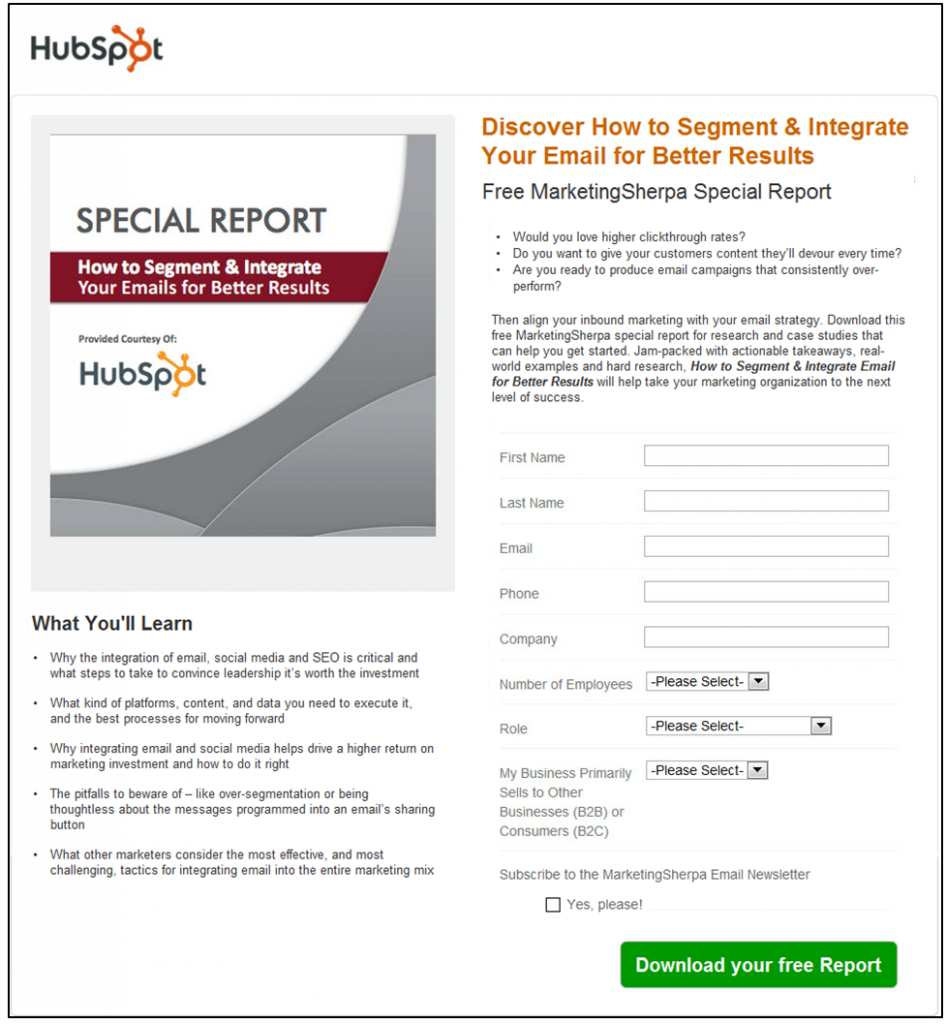
Hypotheses: These are the hypotheses our audience will choose from to test. Below each hypothesis is the corresponding treatment for your reference.
Hypothesis 1 – Visitors arriving to the page are highly motivated to download the e-book based on brand recognition. Removing friction from the page will result in a higher conversion rate.
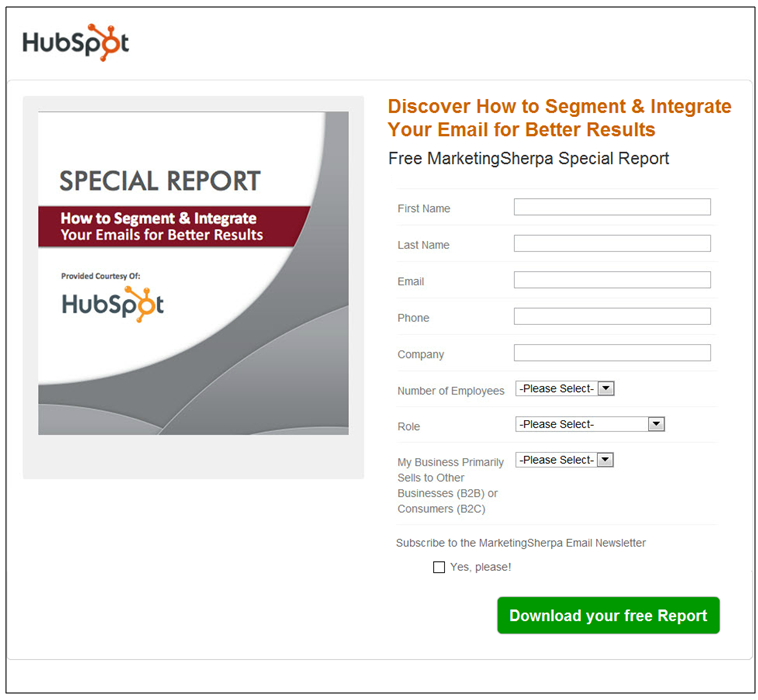
Hypothesis 2 – Communicating the urgency of the offer, that the free e-book download is a limited-time offer, will result in a higher conversion rate.
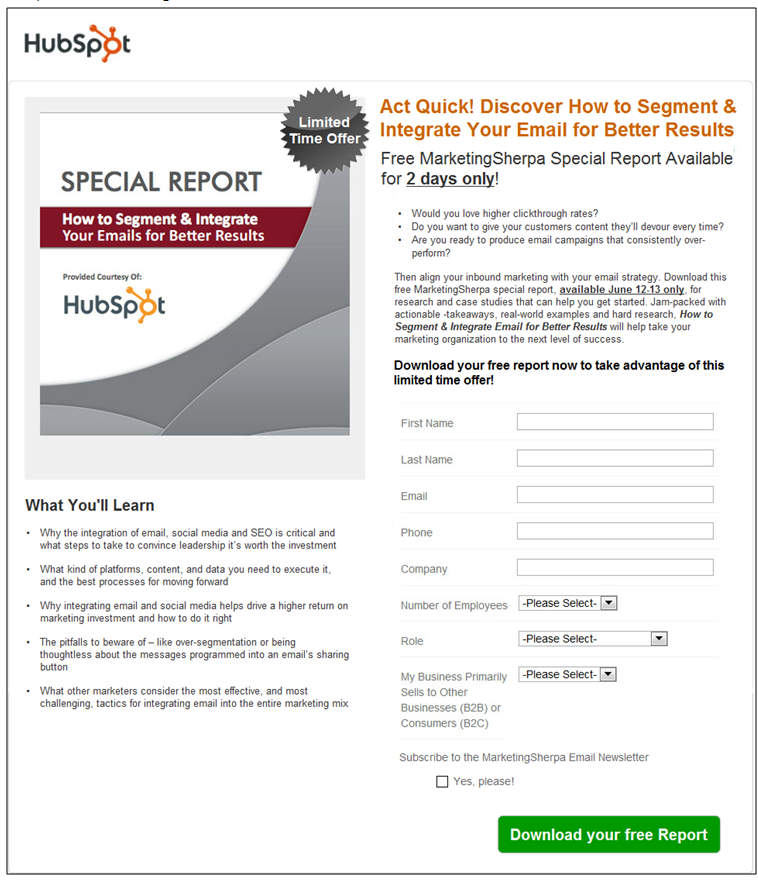
Hypothesis 3 – Adding more visual value to the page, such as charts and graphs from the e-book, will result in a higher conversion rate.
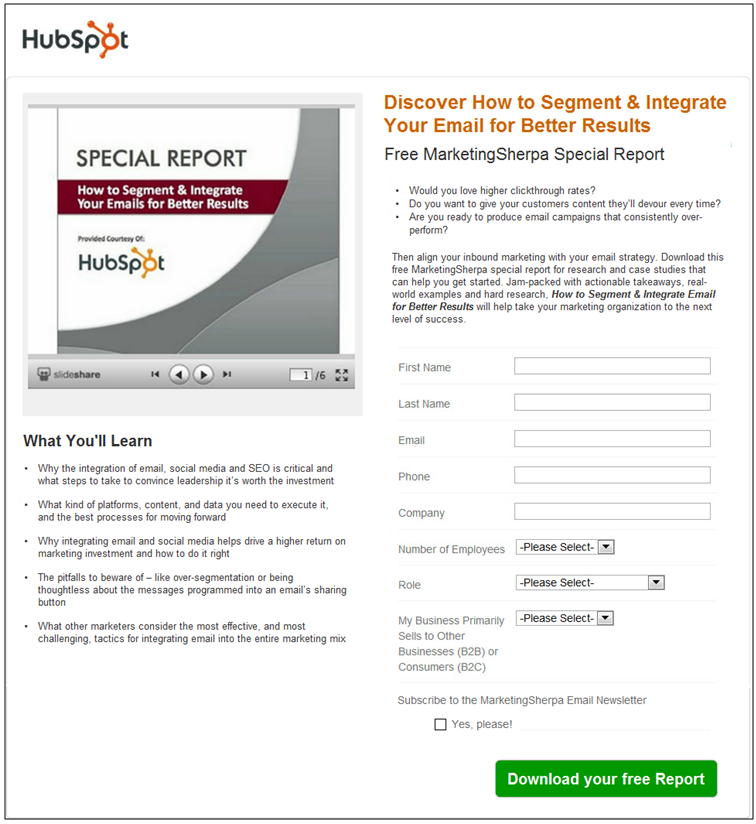
Hypothesis 4 – Incorporating pricing information to increase the perceived value of the e-book will result in a higher conversion rate.
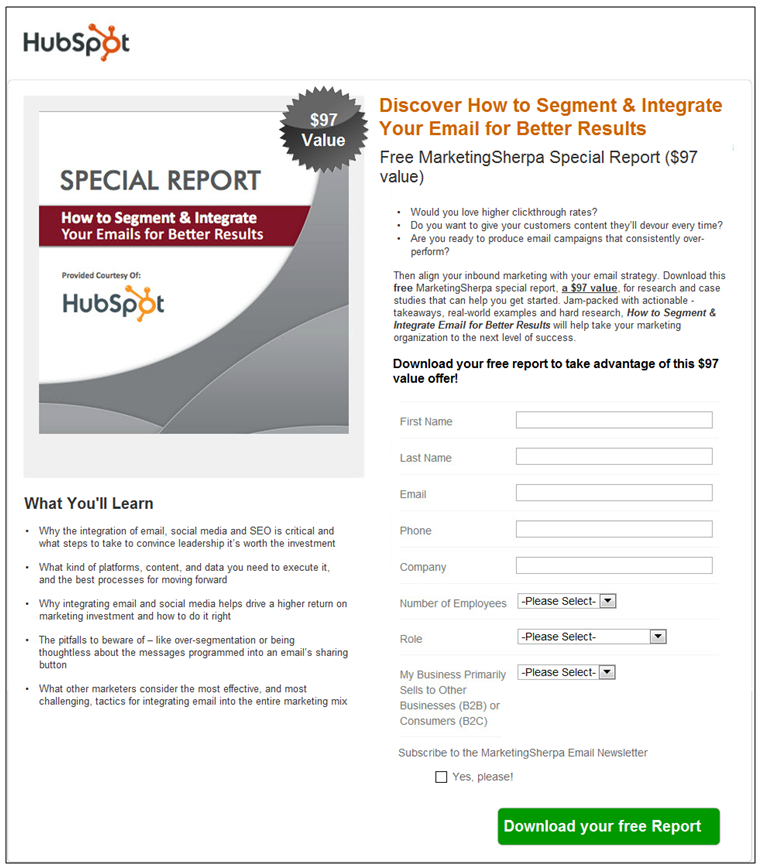
If you’re not at Optimization Summit 2012, we can’t count your vote. However, you can let us know which hypothesis you think will perform best in the comments section of this blog post, along with why you think so. We’re always looking for new insights for our tests.
Related Resources:
Marketing Optimization: How to design split tests and multi-factorial tests
Landing Page Optimization: Minimizing bounce rate with clarity
Landing Page Optimization: 36 articles and resources to help you complete your next LPO project
Conversion Rate Optimization: Minor changes reduce cost per conversion 52.9%



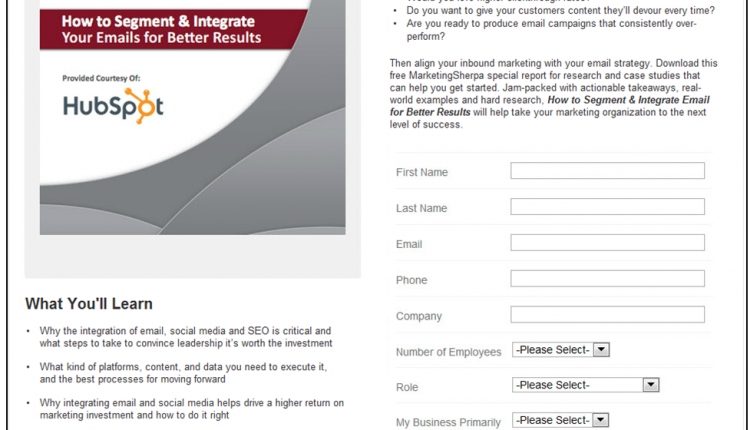
Paul –
I think Hypothesis 1 will perform the best, for exactly the reason you stated: HubSpot is a well-known brand and won’t have to do a lot to convince people to download it. I’ve downloaded their reports in the past, and the biggest issue I see with their landing pages is the lengthy form fields required to get the reports.
Good luck at Optimization Summit!